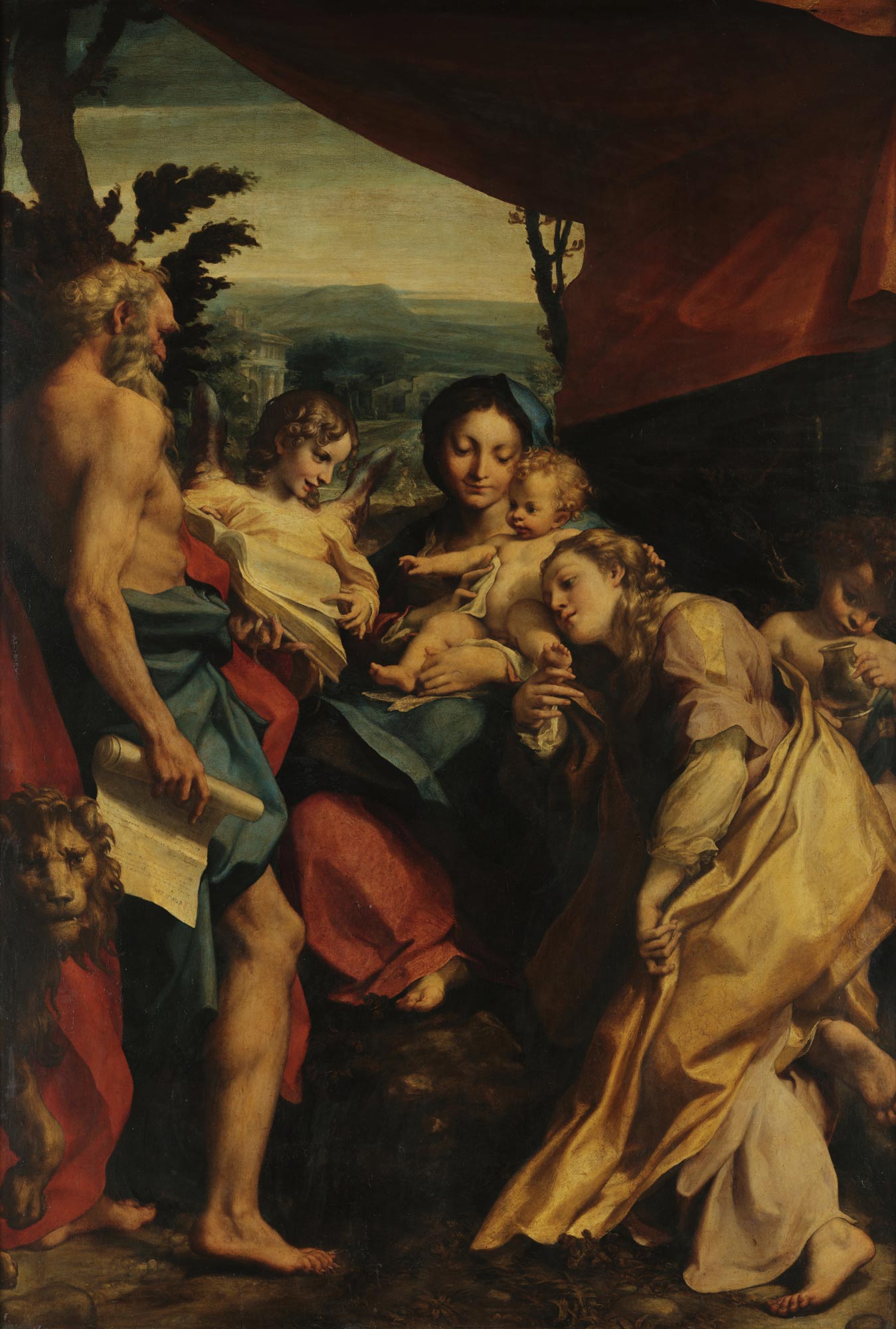Very noble exhibition the one in Forli, at the cloisters of San Domenico, where in each of the past years we have been able to admire reviews always of high value and exceptional organizational effort. This year the subject is still of a single name and concerns a religious character, Mary of Màgdala, who (in strict evangelical dictate) participates only in the three essential moments of the Redemption obtained by Christ: the Crucifixion; the Deposition with relative mourning and burial; and the Resurrection. The evangelists’ texts are brief, as are the acts described, and only in the third episode does Magdalene have a moment of conversation with Jesus. With all of this, even ignoring the woman’s previous events, and then her life after the divine encounter, the Saint of the overflowing love for the incarnate God has garnered a most intense secular devotion among the people of the faithful, a continuous meditation in monasteries and cloisters, and finally a sum of figurations in Christian art that impresses for quantity, diffusion and imitative cómpito offered to the asceticism of every soul.
Great audacity and great confidence, therefore, was to have chosen Magdalene as the solitary protagonist of a museum itinerary that in the very long encroachment of the Forlì complex was to offer a multiplicity of cues, either mystical or imaginary, that could make the theme constantly hold up and keep awake the interest of the average people who have so far poured annually to the Romagna city a truly remarkable presence. The articulation into ten subjective chapters reveals the ideal effort of the organizers, but in practice it does not detract from repetitiveness and knows bends of fatigue. The Catalog remains the field of the remarked volitional dedication here bestowed full-handedly by the authors of the entries; and it also offers the reproductive sequence of the works that Silvana editorial has sustained with undiminished skill, which composes a sort of small monodic encyclopedia as a point of reference that will surely remain in the artistic and religious bibliography. The exhibition slips slowly from an exemplary incipit to the fading out of the “Legenda,” and then devotes itself (rather than to a mystical return of great force) to a chronological succession of art history that often seems an end in itself and cannot not end in the inevitable twentieth-century weakness, where the sacramental force of Magdalene’s values slips into all too obvious and bodily losses, including progressive nudity, from which the Saint is redeemed neither by the powerful full-ass Manzùnian presentation nor by the iconographic fragility of other recent artists.



What is missing from the exhibition? What is missing from the litany sequence of weeping or penitent Magdalene? One very important thing related to the exemplary, evangelical personality of Mary Magdalene, namely that rise to the forefront with respect to the truth of the Resurrection and Christ’s directly received investiture to announce it to the Apostles. The Church does not refrain from declaring Mary of Magdalene “apostle of the Apostles,” as the highest principal title of the spread of the Good News. The meaning of the term, which entails “sending far away,” makes manifest the very nature of the Church and should have stimulated a semantic iconography that-we acknowledge it-is very difficult to find, but can be induced by the translational meanings of certain images of the Church in the world. St. Mary Magdalene, moreover, remains the mother of the scattering of Christ’s word, of ecclesial missionary work.
We are helped here by a marvelous painting by Correggio, preserved in Parma, which is Our Lady of St. Jerome, otherwise known as Il Giorno (The Day), where the distinguished old man who was consciously engaged in the translation of the Bible from Hebrew to popular Latin (the Vulgate) wants to present his work to Jesus himself in order to obtain his approval. Correggio’s stupendous drafting follows the pious belief that St. Jerome spent many years in the Bethlehem Grotto to carry out the fundamental act of translating Scripture in the company of a tame lion but with the assistance of an angel. The saint asks the angel to call Jesus and the latter returns as a Child to his native grotto lovingly carried by his mother, observes the Book and blesses it with a precise gesture. Correggio’s painting is about an act that is historically universal for humanity: the moment where the Word of God, already locked up for a small people in the scroll that St. Jerome holds in his right hand, passes to the entire ecumene: in the background in fact the herald sets out from the city. It is a totally apostolic meaning and here is justified the radiant presence of the Magdalene, so beautiful, so united with Jesus, so abandoned to immense and loving trust in God. So beautiful that El Greco, certainly bewitched, called her the “unique figure de la pintura.”
Here is the painting where she who was weeping is now bathed in sweetness. The Madonna as well is filled with tenderness and the angel smiles admirably, “so that whoever was in anguish, seeing him, would find serenity and joy” (Vasari). Truly the spreading of the divine Word deserves the absolute presence of Magdalene. At least the Baroque copy of “il Giorno” could have appeared to close this momentous exhibition.
Warning: the translation into English of the original Italian article was created using automatic tools. We undertake to review all articles, but we do not guarantee the total absence of inaccuracies in the translation due to the program. You can find the original by clicking on the ITA button. If you find any mistake,please contact us.